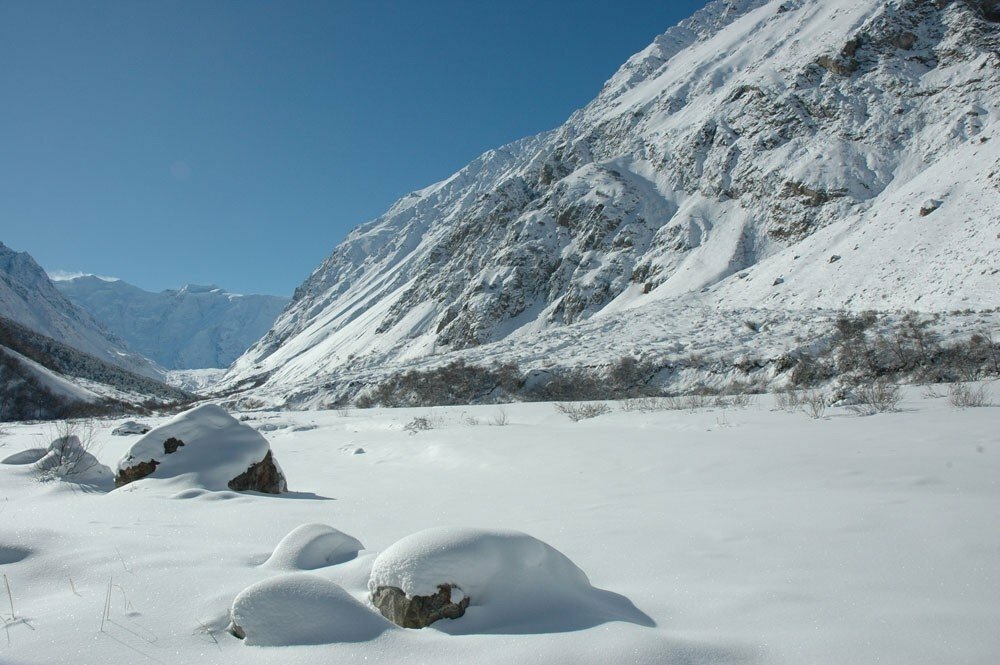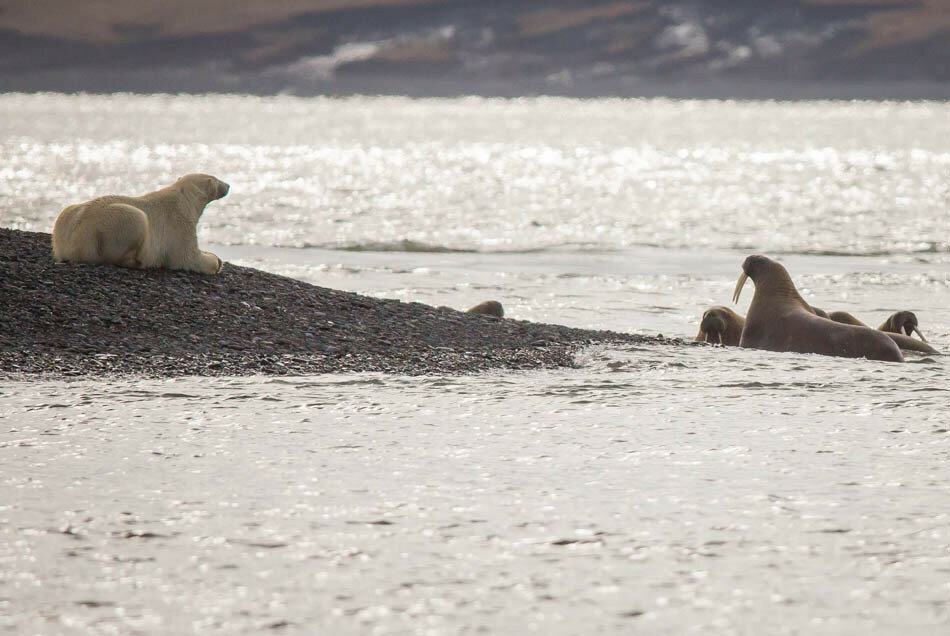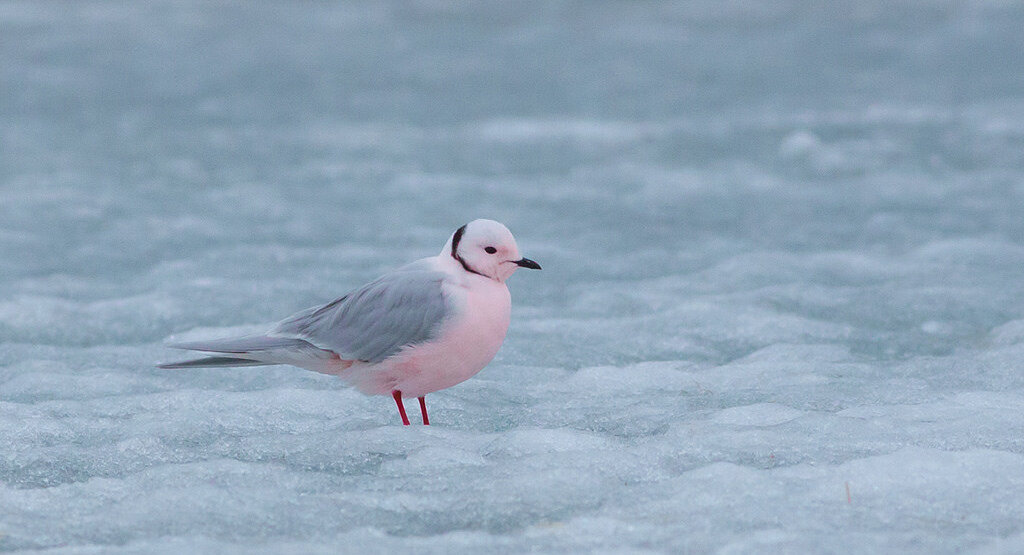March 31, 2023
The Great Arctic Reserve
Friends, we continue to introduce you to the nature reserves and national parks of Russia. Today we are going to the permafrost zone, to the largest nature reserve in Eurasia – the Great Arctic. It is located in the northern part of the Taimyr Peninsula, adjacent maritime territories and nearby islands and archipelagos.

The reserve was created in 1993, on the 150th anniversary of the discovery of Taimyr by the Russian academician A. F. Middendorf. The purpose of its creation was and remains the preservation and study of unique Arctic ecosystems, as well as rare and endangered species of plants and animals.

Low mountains and plains alternate in the relief of the reserve. The entire territory is located in the permafrost zone. Most of it is Arctic tundra, the northern parts are located in the Arctic desert zone. This is one of the coldest places on the mainland. The "warm" place here is Cape Chelyuskin, here the temperature rises to 7 ° C in summer, the coldest is Dixon Island, there are frosts up to -60 ° C in winter, accompanied by strong blizzards and winds. The depth of permafrost in mountainous areas is 500-700 m, in valleys – 200-300 m. The temperature of the frozen ground is from -7 to -11 ° C. It is not surprising that the flora of the reserve is not very diverse. Only a few flowering plants are able to survive in the conditions of a short polar summer. The most beautiful of them, by far, is the pillow-shaped poppy. However, unlike the steppe poppy, which is familiar to us, it is not red, but a pale yellow color. However, lichens also look very picturesque, coloring the tundra in different colors, from black to bright orange. In total, scientists have found 74 species of lichens, 178 species of mosses and 261 species of higher plants: cereals, sedges, saxifrages, etc. There are also 15 types of mushrooms growing here. However, it is not allowed to collect them.
124 species of birds are found in the Great Arctic Reserve, of which 55 nest and hatch chicks in harsh northern conditions. Among them are geese, ducks, swans, cossacks, gulls, kiras, partridges, polar owls.

There are 12 species of land mammals and 4 species of marine mammals: walruses, seals, lakhtaks or sea hares, belugas. On land, the largest animals are polar bears, wild reindeer and musk oxen, which at first just entered the territory of the reserve, but recently have become its permanent inhabitants. But among the smaller ones are arctic foxes, hares, and, of course, lemmings.

Some of the inhabitants of the reserve belong to rare and endangered species listed in the Red Book of Russia and the Krasnoyarsk Territory: polar bear, Atlantic and Laptev walruses, white-tailed eagle, peregrine falcon, small swan, black and red-throated kazark, white-billed loon, white and pink gulls.

The harsh beauty of the northern nature is emphasized by ice mountains – icebergs, some of which are more than 1000 years old, and the northern lights.
For those who are not afraid of the cold, various activities related to ecotourism are organized in the reserve: zoological safari, visits to Nenets camps, rafting, fishing and even diving.

The reserve was created in 1993, on the 150th anniversary of the discovery of Taimyr by the Russian academician A. F. Middendorf. The purpose of its creation was and remains the preservation and study of unique Arctic ecosystems, as well as rare and endangered species of plants and animals.

Low mountains and plains alternate in the relief of the reserve. The entire territory is located in the permafrost zone. Most of it is Arctic tundra, the northern parts are located in the Arctic desert zone. This is one of the coldest places on the mainland. The "warm" place here is Cape Chelyuskin, here the temperature rises to 7 ° C in summer, the coldest is Dixon Island, there are frosts up to -60 ° C in winter, accompanied by strong blizzards and winds. The depth of permafrost in mountainous areas is 500-700 m, in valleys – 200-300 m. The temperature of the frozen ground is from -7 to -11 ° C. It is not surprising that the flora of the reserve is not very diverse. Only a few flowering plants are able to survive in the conditions of a short polar summer. The most beautiful of them, by far, is the pillow-shaped poppy. However, unlike the steppe poppy, which is familiar to us, it is not red, but a pale yellow color. However, lichens also look very picturesque, coloring the tundra in different colors, from black to bright orange. In total, scientists have found 74 species of lichens, 178 species of mosses and 261 species of higher plants: cereals, sedges, saxifrages, etc. There are also 15 types of mushrooms growing here. However, it is not allowed to collect them.
124 species of birds are found in the Great Arctic Reserve, of which 55 nest and hatch chicks in harsh northern conditions. Among them are geese, ducks, swans, cossacks, gulls, kiras, partridges, polar owls.

There are 12 species of land mammals and 4 species of marine mammals: walruses, seals, lakhtaks or sea hares, belugas. On land, the largest animals are polar bears, wild reindeer and musk oxen, which at first just entered the territory of the reserve, but recently have become its permanent inhabitants. But among the smaller ones are arctic foxes, hares, and, of course, lemmings.

Some of the inhabitants of the reserve belong to rare and endangered species listed in the Red Book of Russia and the Krasnoyarsk Territory: polar bear, Atlantic and Laptev walruses, white-tailed eagle, peregrine falcon, small swan, black and red-throated kazark, white-billed loon, white and pink gulls.

The harsh beauty of the northern nature is emphasized by ice mountains – icebergs, some of which are more than 1000 years old, and the northern lights.
For those who are not afraid of the cold, various activities related to ecotourism are organized in the reserve: zoological safari, visits to Nenets camps, rafting, fishing and even diving.
Read more
July 31, 2024
April 12, 2024
April 5, 2024